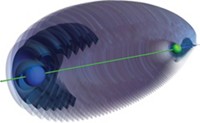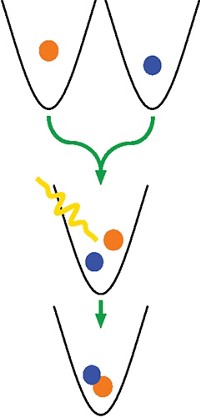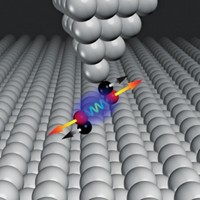Advertisement
Grab your lab coat. Let's get started
Welcome!
Welcome!
Create an account below to get 6 C&EN articles per month, receive newsletters and more - all free.
It seems this is your first time logging in online. Please enter the following information to continue.
As an ACS member you automatically get access to this site. All we need is few more details to create your reading experience.
Not you? Sign in with a different account.
Not you? Sign in with a different account.
ERROR 1
ERROR 1
ERROR 2
ERROR 2
ERROR 2
ERROR 2
ERROR 2
Password and Confirm password must match.
If you have an ACS member number, please enter it here so we can link this account to your membership. (optional)
ERROR 2
ACS values your privacy. By submitting your information, you are gaining access to C&EN and subscribing to our weekly newsletter. We use the information you provide to make your reading experience better, and we will never sell your data to third party members.
Physical Chemistry
A Modeling Coup
With supercomputers, first exact model of a molecular breakup is achieved
by Stu Borman
December 19, 2005
| A version of this story appeared in
Volume 83, Issue 51

Quantum Mechanics
Decades after the Schrödinger equation was formulated, researchers have solved it for the light-induced breakup of a molecule. The solution provides a model that makes it possible to study the electronic and nuclear interactions occurring as the molecule is torn apart. The achievement could lead to a better understanding of chemical bonding, especially if it can be generalized to more complex molecules.
The study was carried out by postdoc Wim Vanroose of Catholic University Leuven, in Belgium; chemistry professor Fernando Martín of Autonomous University of Madrid; senior staff scientist Thomas N. Rescigno of Lawrence Berkeley National Laboratory; and professor of chemistry and applied science C. William McCurdy of the University of California, Davis (Science 2005, 310, 1787).
The work was inspired by an earlier study by University of Frankfurt professor of nuclear physics Reinhard Dörner, his student Thorsten Weber, and coworkers that demonstrated an experimental approach for completely fragmenting a diatomic molecule such as D2 with a single photon (Nature 2004, 431, 437). That study showed that the paths taken by the ejected electrons depend sensitively on the distance between the two nuclei at the instant the photon is absorbed. But the mechanism of the intriguing dependence could not be studied further by experimental means.
To unravel the mechanism, Vanroose, Martín, Rescigno, and McCurdy employed supercomputers at three sites with hopes that a theoretical approach would yield an answer. What they have achieved is the first exact numerical solution of the Schrödinger equation for the double photoionization of a molecule. The reaction is the complete disintegration of H2, in which two electrons are expelled when a photon is absorbed and the protons then fly off as well by a process called Coulomb explosion.
Dörner comments that the study is "a major achievement in many respects. Finally, almost 80 years after formulation of the Schrödinger equation and 100 years after Einstein's explanation of the photoelectric effect, this group has obtained a numeric solution for a seemingly simple problem: How does a single photon break the simplest molecule into its pieces? This opens a completely new observation window on the correlated motion of electrons within a chemical bond. It's a major theoretical breakthrough that is really at the edge of current computational possibilities."





Join the conversation
Contact the reporter
Submit a Letter to the Editor for publication
Engage with us on Twitter